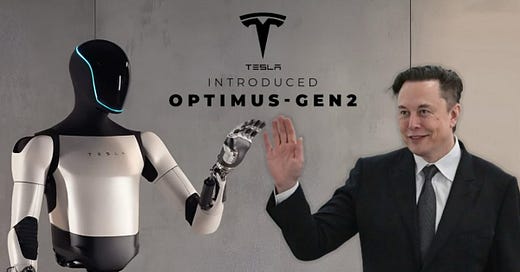Trump Wants Rare Earths, But So Does Elon Musk
The future of artificial intelligence is unfolding in distinct phases, each driving the next wave of technological transformation. The first phase, Generative AI, has revolutionized how humans interact with information, with models like OpenAI’s GPT and Google’s Gemini creating text, images, and even code. The next phase, Agentic AI, will push beyond static outputs by autonomously reasoning, planning, and executing complex tasks, forming the backbone of intelligent assistants and AI-powered decision-making systems. However, the final frontier of AI lies in Physical AI—where intelligent models not only think but also act in the real world through robotics and automation.
Physical AI will manifest in two key applications: humanoid robots and self-driving vehicles. These systems require advanced sensor fusion, real-time decision-making, and precise actuation, making them the most complex AI-driven machines ever built. Tesla is at the center of this transition, leveraging its AI expertise from self-driving technology and neural network training to develop Optimus, a humanoid robot designed to integrate into factories, logistics, and, eventually, consumer environments.
Tesla Optimus: The Vanguard of Physical AI
Tesla’s Optimus Gen 3 humanoid robot is a direct extension of the company’s AI capabilities, incorporating advances in computer vision, reinforcement learning, and real-time actuation. While generative AI and Agentic AI enable software to automate knowledge work, Optimus represents the next leap—AI interacting with and manipulating the physical world.
The current iteration of Optimus boasts over 60 degrees of freedom, including 28 degrees in its body and limbs and 34 degrees in its dexterous hands, enabling it to perform tasks such as lifting, assembling, and fine motor operations. Unlike earlier humanoid robots, which were constrained by rigid programming and limited autonomy, Tesla’s Optimus is built on an end-to-end AI control system that allows for self-learning and adaptation.
However, the true enabler of Physical AI lies in advanced materials and power-efficient actuators, which bring us to the key underlying technology—rare earth permanent magnets.
Rare Earths: The Hidden Foundation of Humanoid Robotics
At the core of Tesla’s Optimus and other humanoid robots lies an intricate system of high-torque electric actuators and servos, essential for enabling precise movement and lifelike mobility. These actuators depend on neodymium-iron-boron (NdFeB) permanent magnets, the most powerful and efficient magnetic materials currently available. Their role in robotics is indispensable, as they provide the necessary torque and power density for robots to lift and carry objects, ensure energy efficiency for extended operation on battery power, and allow for the precision control required for smooth, dynamic movement.
Tesla’s Optimus is estimated to require 3.5 kg of NdFeB per unit, a significant factor in the growing demand for rare earth materials. If production scales to 100,000–1 million robots annually, the global rare earth magnet market would see an increase in demand ranging from 0.27% to 2.69% by 2025. At an even greater scale, with humanoid robot adoption reaching 100 million units worldwide, the rare earth industry would require an additional 350,000 tons of NdFeB, nearly tripling the total projected global production of high-performance rare earth magnets in 2025.
The demand for rare earth materials is expected to surge as humanoid robotics adoption accelerates. Table 1 illustrates the estimated rare earth demand for humanoid robots from 2025 to 2030, highlighting how this industry alone could reshape the global NdFeB supply landscape.




